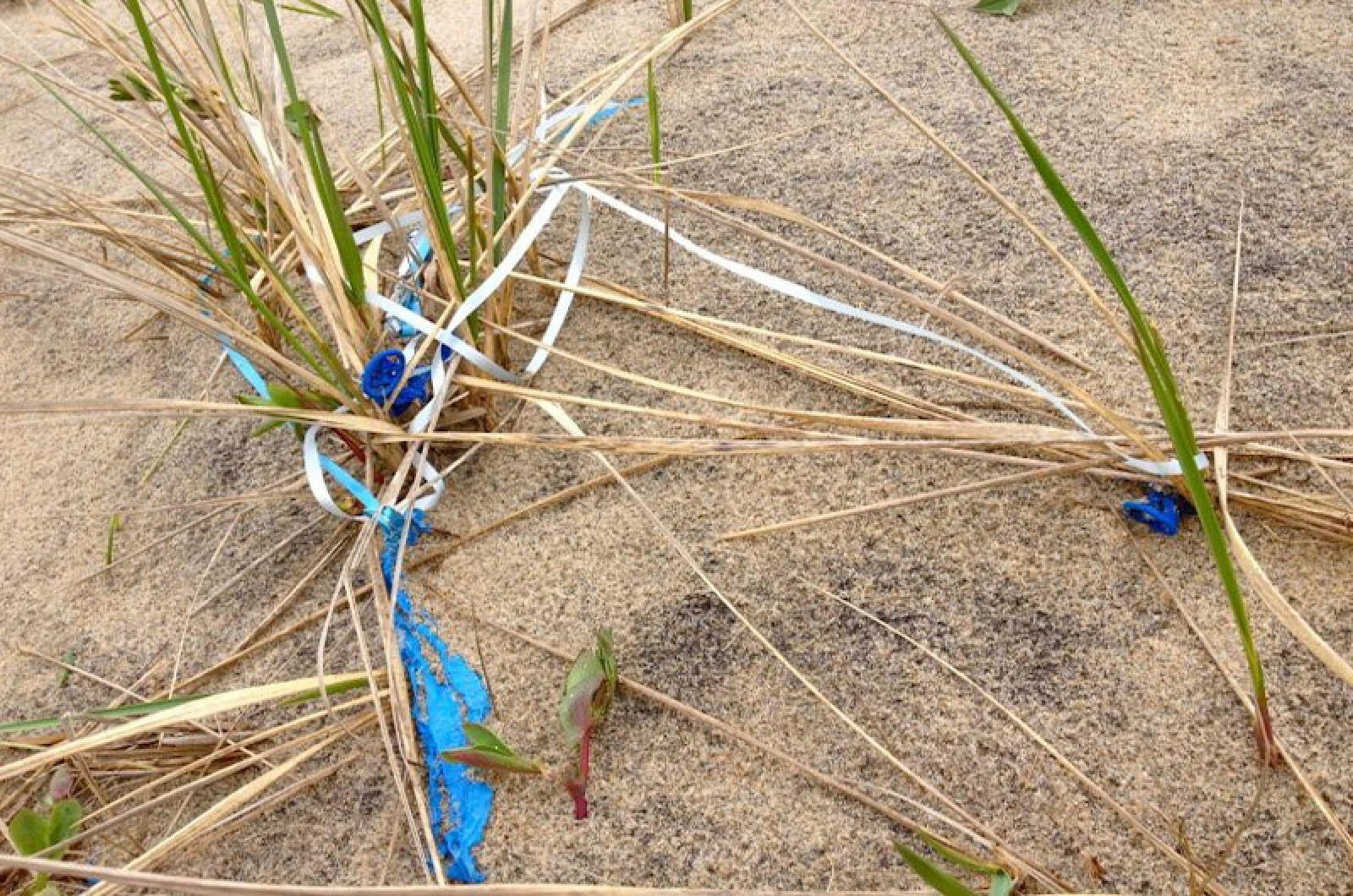“Never doubt that a small group of thoughtful committed citizens can change the world; indeed it is the only thing that can.”
This quote by Margaret Mead might describe the visions and dreams of a small group of Island activists led by Constance Messmer.
Constance, along with others, is taking a stand against balloons. They are floating a trial balloon, so to speak, asking local businesses to not sell balloons. Cronig’s Market has taken up the charge and even gone a few steps further, deciding not to sell balloons, but also glow sticks and Styrofoam, all of which end up littering our beaches and endangering wildlife.
Though the glow sticks and Styrofoam are human-made plastics, most balloons are made of latex, which is arguably natural since it is made from a plant. However, paradoxically, this natural material is treated with chemicals that retard breakdown and create more colorful orbs, causing them to linger longer and potentially pollute.
Since what goes up, must come down, those balloons that drifted up to the sky will fall back down to earth. Helium-filled balloons float up inspirationally, but will eventually, unhappily, fall back to the ground or explode into many pieces.
The foil (mylar) and latex balloons are both believed to be a problem in the environment, causing distress and death to marine mammals, cetaceans, birds and other wildlife. Damage is done when animals ingest balloons or pieces of balloons. In the case of marine life, many species that eat jellyfish or squid confuse balloons for their particular prey. Though the latex can biodegrade, it can take anywhere from six months to five years for that to happen.
And those colorful ribbons that hold them cause their own problems. Animals can ingest them or get tangled in them, causing lacerations or strangulation. A favorite Island bird, the osprey, will collect and use the ribbons in their nests. In the worst circumstance, those ribbons can harm the bird or its chicks if they get tangled in them, making their natal nests a source of possible peril.
There are other concerns since both types of balloons are sometimes filled with helium. It turns out that although helium is a very common element, it can only be found naturally in the environment. Humans have not figured out how to manufacture helium. In this case, where the rubber meets the road is that helium is a very important element for cooling, specifically the cooling of medical equipment. Every bit of this precious gas that is wasted in balloons will never be recovered or remade for more important uses.
The worst offenders are the mass balloon launches, where many of these orbs are released simultaneously to celebrate or honor an occasion or person. Weddings, funerals, special events and openings are occasions that have included mass balloon releases.
This practice, however, is going out of favor. Many states, organizations and businesses have banned the activity, including New York, Florida, Texas, Tennessee, Virginia, Connecticut, Walt Disney World, the National Park Service and even the White House.
Far be it from me to make balloon animals extinct, or sadden a balloon-loving child, but consider alternatives and use balloons responsibly. Bubbles, flags, banners, streamers and paper pompoms or flowers are all things to get kids excited about, but that won’t harm our wildlife.
While these suggestions might go over like a lead balloon, please do consider these alternatives. Your choice could make a difference out on the open ocean or at a beach near you.
Suzan Bellincampi is director of the Felix Neck Wildlife Sanctuary in Edgartown, and author of Martha’s Vineyard: A Field Guide to Island Nature.




Comments (6)
Comments
Comment policy »